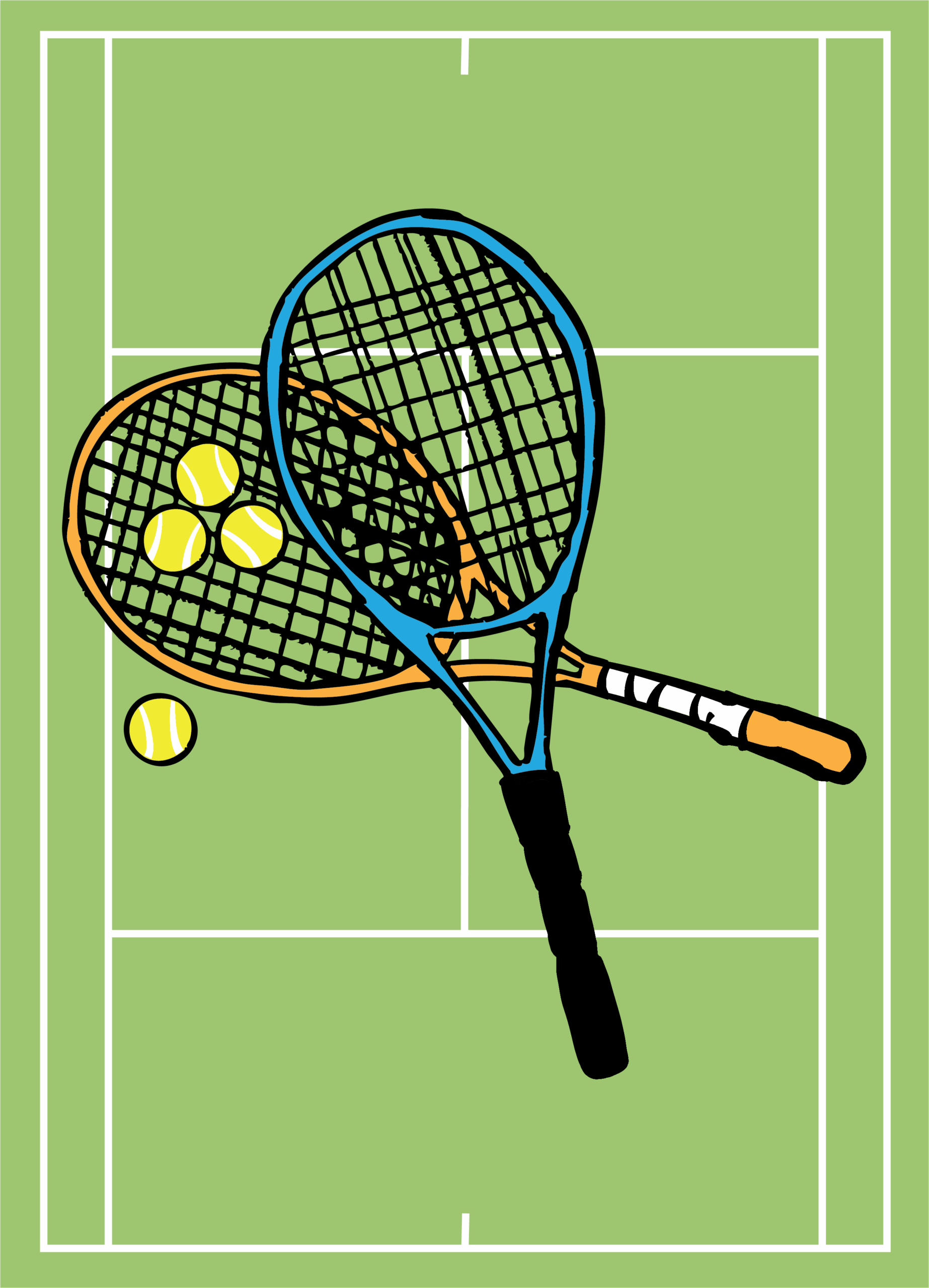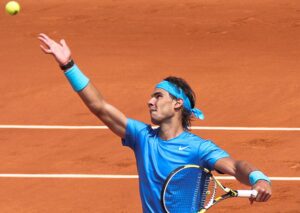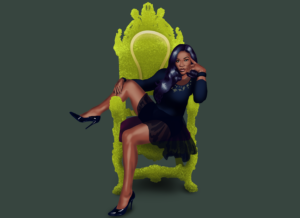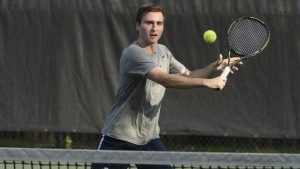Evan Cole (CAS ’26), like many Georgetown students, ended his junior year planning to enter the business world after graduation. But he always had an itch to explore his passion for tennis.
“I was pretty poised to go into investment banking, consulting, that kind of route,” Cole said in an interview with the Voice. “I didn’t have the security or the courage to kind of really explore what I wanted to do.”
This summer, however, he grew frustrated with that path, realizing that he was not passionate about his internship. Halfway through the summer, he decided to take the leap, founding an online tennis publication called Racquet Theory, with help from a dedicated team of friends. Noah Young (CAS ’26) has played an especially big role in Racquet Theory’s creative output, directing photoshoots and guiding the publication’s vision.
Cole, Young, and their tennis-loving friends have spent the past few months pouring time into this project, trying to turn their vision into something that connects with tennis fans, both old and new. So far, Racquet Theory has produced player analysis essays, tennis-themed photoshoots, and short videos about tennis events and shops. One thing connects the range of content: exploring a love for tennis.
“Racquet Theory is an immersion. It’s not a business. We’re not selling anything. I’ve said it before, but it’s just really my attempt at immersing myself in something that I love for the very first time,” Cole said. “We’re kind of throwing spaghetti at the wall and seeing what sticks for other people, but everything that we produce we like.”
Racquet Theory begins with the sport, but it also seeks to explore the intersection of tennis, art, fashion, and design. To Cole, tennis fits seamlessly with these aesthetic forms of expression.
“I think the geometry of a tennis court, the minimalism, the sleekness, the texture is all there,” Cole said. “It’s just such an open book of aesthetics, and I just feel like it’s not tapped into.”
Taking the time to appreciate the aesthetics of tennis is part of what Cole calls the “slower and stranger” approach that Racquet Theory is trying to take. It’s a way of looking at the sport that contrasts with the flashy, headline-driven sports media landscape that exists today. Racquet Theory’s strategy takes the time to understand all the people who make tennis.
“Not only is it not a team sport and you’re out there by yourself, but you can see these people’s faces, you can see them figuring things out in front of them,” Cole said.
If tennis is a mirror for the human experience, it also reflects some of people’s worst tendencies. In particular, the sport has a history of exclusivity, with access to the game often reserved for only the most affluent players and fans. Racquet Theory’s mission is to combat that exclusivity by letting more people connect with the game.
“We’re trying to meet you where you’re at,” Cole said. “I’m starting with trying to bring people to the game and showing them that there’s a place for them somewhere. Whether it’s playing, whether it’s watching, whether it’s critiquing the outfits that you see in the stands.”
The legacy of exclusion in tennis is also deeply tied to the sport’s history of racism. Tennis clubs and tournaments, including the most prestigious tournament organizer in the United States, the United States Lawn Tennis Association (USLTA), repeatedly excluded Black players until 1938. Although some Black players founded their own clubs and tournaments, such as the American Tennis Association, a competitor to the USLTA, the sport still has the widespread perception of being a sport for wealthy white players.
Cole, who is Black, finds inspiration from Black tennis stars like the Williams sisters, Coco Gauff and Naomi Osaka. He hopes that through Racquet Theory, he can inspire the next generation of tennis players, as his idols inspired him.
“I think I can fill that space. And in terms of representation, I think as a Black tennis journalist…it’s a space that’s really important to me,” Cole said, adding that he wanted to create that space for the next generation of fans. He hopes that Racquet Theory can show young Black tennis fans that there is a space for them in the game.
Engaging with tennis lovers and bringing new people into the sport is the essence of Racquet Theory. It starts with a love and passion for every aspect of tennis and a desire to share that with the world. Cole doesn’t know where the publication will take him, but the possibilities are exciting.
“I’ve never been a person to enjoy uncertainty. This is the first time I’ve enjoyed uncertainty,” Cole said.
So much is up in the air, but Cole has one certainty about the future of Racquet Theory.
“I want to create content that makes people feel something,” Cole said.





